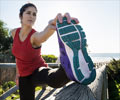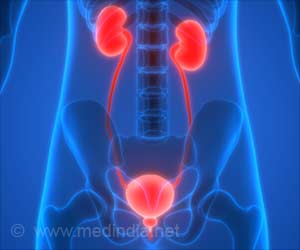According to MIT engineers, in the earliest stages of arthritis, high-impact exercises such as running or jumping may worsen cartilage damage.

By studying the molecular properties of cartilage, MIT engineers have now discovered how the earliest stages of arthritis make the tissue more susceptible to damage from physical activities such as running or jumping.
The findings could help researchers develop tests to diagnose arthritis earlier in patients at high risk for the disease and also guide engineers in designing replacement cartilage.
The results also suggested that athletes who suffer traumatic knee injuries, such as a torn anterior cruciate ligament (ACL) - which gives them a greater chance of developing arthritis later in life - should be cautious when returning to their sport following surgery.
Cartilage is packed with protein-sugar complexes known as aggrecans, each made of about 100 highly charged molecules called glycosaminoglycans (GAGs). Those molecules protect joints by absorbing water and causing the tissue to stiffen as pressure is applied.
"The cartilage is a stiff sponge, filled with fluid, and as we compress it, fluid has to percolate through these closely spaced GAG chains," said Alan Grodzinsky, an MIT professor of biological, electrical and mechanical engineering and senior author of the study.
Advertisement
The MIT team set out to investigate how the molecular structure of GAG generates this stiffening over such a wide range of activity - from sitting and doing nothing to running or jumping at high speed. To do this, they developed a new, highly sensitive type of atomic force microscopy (AFM), allowing them to measure how aggrecan reacts at the nanoscale to very high loading rates (the speeds at which forces are applied).
Advertisement
The researchers found that when exposed to very high loading rates - similar to what would be seen during running or jumping - normal cartilage was able to absorb fluid and stiffen normally. However, in the GAG-depleted tissue, fluid leaked out rapidly.
"That's what puts the collagen in trouble, because now this becomes a very floppy sponge, and if you load it at higher rates the collagen network can be damaged. At that point you begin an irreversible series of activities that can result in damage to the collagen and eventually osteoarthritis," Grodzinsky said.
Researchers in Grodzinsky's lab are now working to identify possible drugs that might halt the loss of aggrecan, as well as designing tissue scaffolds that could be implanted into patients who need cartilage-replacement surgery.
The findings appeared in a recent issue of the Biophysical Journal.
Source-ANI











